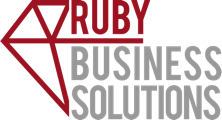In the ever-evolving landscape of Canadian business, small and medium-sized businesses (SMBs) face unique challenges and opportunities. A crucial aspect of maintaining the health and sustainability of your business is effective cash flow management. Cash flow, essentially, is the lifeblood of your business, influencing your ability to operate, invest, and grow. This blog post will share practical techniques for managing and improving your business’s cash flow, focusing on three key areas: invoice management, expense tracking, and leveraging financial software.
1. Invoice Management: Accelerating Cash Inflows
Prompt Payment Policies: Implement and clearly communicate your payment terms to ensure timely receivables. For instance, consider terms such as net 30 or net 60, but also offer incentives for early payments, like a small discount. This approach can encourage quicker payments, improving your cash inflow.
Electronic Invoicing Solutions: Utilize electronic invoicing to expedite the billing process. Digital invoices can be sent and received instantly, reducing the waiting period for payments. Moreover, electronic systems allow for automated reminders to be sent to clients, reducing the chances of late payments.
Regular Invoice Auditing: Regularly review your invoicing process to identify and rectify any inefficiencies or delays. Ensure that invoices are accurate, complete, and sent promptly after services are rendered or products are delivered.
2. Expense Tracking: Controlling Cash Outflows
Budget Discipline: Establish a robust budgeting process to monitor and control expenses. Regularly compare actual expenses against your budget to identify areas where costs can be reduced or eliminated. This discipline helps maintain a healthy balance between income and expenditure, crucial for positive cash flow.
Cost-Benefit Analysis: Before making significant business decisions, conduct a cost-benefit analysis to understand their potential impact on your cash flow. This analysis can help you avoid unnecessary expenditures or choose more financially viable options.
Negotiate with Suppliers: Building strong relationships with suppliers can open opportunities for better payment terms, discounts, or bulk purchase benefits. Negotiate longer payment terms where possible to keep more cash within the business for longer periods.
3. Leveraging Financial Software: Streamlining Cash Flow Management
Choosing the Right Tools: Invest in financial management software tailored to the needs of Canadian SMBs. Look for features like integrated invoicing, expense tracking, and real-time financial reporting. Software such as QuickBooks, Xero, or FreshBooks can offer comprehensive solutions to streamline your financial operations.
Automate Where Possible: Automation can significantly improve efficiency in managing cash flow. Set up automated bill payments to avoid late fees, automate invoice generation and sending, and use software to track expenses in real-time.
Financial Dashboards: Utilize dashboards provided by financial software to get an at-a-glance view of your financial health. These dashboards can offer insights into cash flow trends, outstanding invoices, and upcoming bills, enabling more informed decision-making.
Conclusion
Improving and managing cash flow requires a proactive approach, focusing on enhancing invoicing practices, rigorously tracking expenses, and leveraging the latest in financial software. By implementing these strategies, Canadian SMBs can navigate the complexities of cash flow management more effectively, paving the way for sustained growth and success. Remember, the key to maximizing cash flow lies in the details—paying attention to the nuances of your financial operations can unlock greater financial stability and opportunity for your business.







